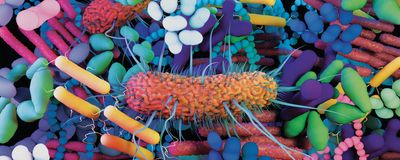HIV
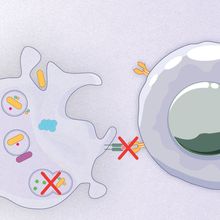
How to Get Away from the Immune System
Mariella Bodemeier Loayza Careaga, PhD | Dec 13, 2024 | 3 min read
From manipulating host molecules to concealing their presence in the host’s body, microbes employ a wide range of tactics to dodge immune detection.
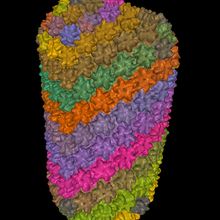
HIV Engages in Mimicry to Enter the Nucleus
Danielle Gerhard, PhD | Apr 16, 2024 | 5 min read
To enter the nucleus, the HIV-1 virus acts like a transport receptor, which presents new targets for antiviral therapies.
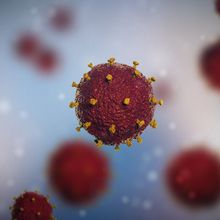
A New Piece in the HIV Replication Puzzle
Mariella Bodemeier Loayza Careaga, PhD | Feb 14, 2024 | 4 min read
A host lipid-modifying enzyme plays a key role in HIV envelope formation, viral maturation, and infectivity.

Accessible Lateral Flow Assays: Test to Treat, Test to Protect
Deanna MacNeil, PhD | Oct 18, 2023 | 3 min read
From development to implementation, Rosanna Peeling discusses the importance of rapid tests for public health.
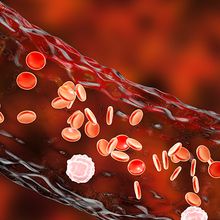
New CRISPR Treatment Could Prevent HIV Reinfection after Viral DNA Excision
Jennifer Zieba, PhD | Aug 21, 2023 | 3 min read
Researchers design dual CRISPR treatments to remove HIV DNA and prevent reinfection in vitro.
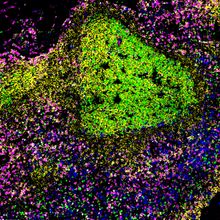
Targeting Antigen “Sanctuary” in Lymph Nodes Could Make Vaccines Better
Natalia Mesa, PhD | Feb 10, 2023 | 3 min read
Researchers find that small sacks inside lymph nodes contain low proteolytic activity and act as safe havens for antigens.
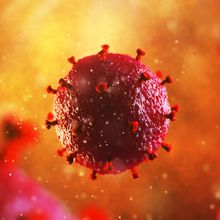
Viral Protein Behind Chronic Inflammation in People with HIV: Study
Natalia Mesa, PhD | Dec 12, 2022 | 3 min read
The HIV protein Nef can cause long-term genetic changes that lead to hyperreactive immune cells, according to research in human cells and mice.
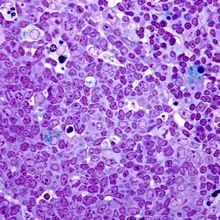
Slow Vaccine Delivery May Maximize Immune Response
Alejandra Manjarrez, PhD | Sep 23, 2022 | 5 min read
A vaccine strategy involving formulation changes, an initial escalating dose, and a longer wait for booster immunization results in more-effective antibody production against HIV in rhesus monkeys, a study finds.
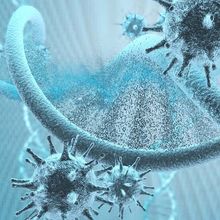
HIV DNA Circularizes to Bypass CRISPR-Based Treatments
Nele Haelterman, PhD | Mar 7, 2022 | 3 min read
CRISPR-mediated removal of HIV can create small, infectious DNA molecules.
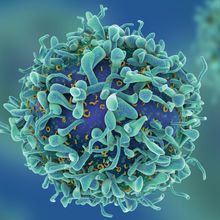
Woman Seemingly Cured of HIV After Umbilical Cord Transplant
Natalia Mesa, PhD | Feb 16, 2022 | 3 min read
Umbilical cord blood may be a good alternative to bone marrow transplants for treating HIV in patients with HIV and cancer.
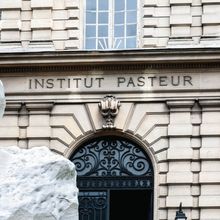
Luc Montagnier, Virologist who Codiscovered HIV, Dies at Age 89
Natalia Mesa, PhD | Feb 11, 2022 | 3 min read
The Nobel laureate had courted controversy in recent years on vaccines and other matters.

Opinion: Coronavirus and Regulating Access to High-Risk Pathogens
Michael Parker, Shreya Kalra, and Bryce Kassalow | Feb 10, 2022 | 10+ min read
Overbearing restrictions on research into toxins and pathogens such as SARS-CoV-2 could undermine public health and security in the long run.

Remembering Those We Lost in 2021
Lisa Winter | Dec 23, 2021 | 5 min read
As the year draws to a close, we look back on researchers we bid farewell to, and the contributions they made to their respective fields.
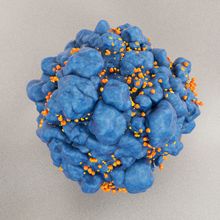
Woman’s Body Appears to Rid Itself of HIV
Chloe Tenn | Nov 18, 2021 | 3 min read
Researchers report what appears to be the second case of a person’s immune system clearing the virus on its own.

The Scientist Speaks - Molecular Farming: The Future of Pharmaceuticals
Niki Spahich, PhD | Nov 16, 2021 | 1 min read
Julian Ma discusses past, present, and future uses of plant biotechnology for disease treatments.

Treatments for Disease Pandemics
The Scientist | Oct 29, 2021 | 1 min read
Researchers develop new vaccines and therapeutics to combat the spread of infectious diseases.
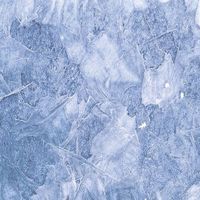
Scientific Breakthroughs with Cryogenic Electron Microscopy
The Scientist and Thermo Fisher Scientific | Jun 10, 2021 | 1 min read
Structures made via cryo-EM give researchers insights into SARS-CoV-2, HIV, neurological disorders, cancer, and more.
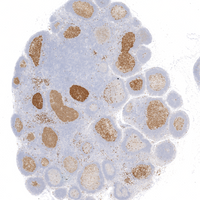
CAR T Cells Derived from Stem Cells Target HIV Tissue Reservoirs in Monkeys
Berly McCoy, PhD | May 25, 2021 | 3 min read
Transplanted CAR stem cells persisted long term and showed multilineage engraftment in tissues that harbor HIV.
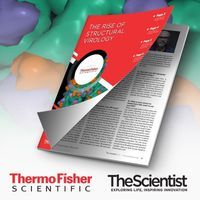
Transforming Virology Research with Cryo-EM
The Scientist and Thermo Fisher Scientific | May 11, 2021 | 1 min read
Explore what researchers can do with Cryo-EM
